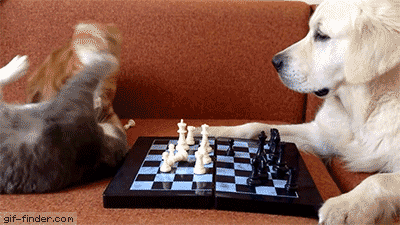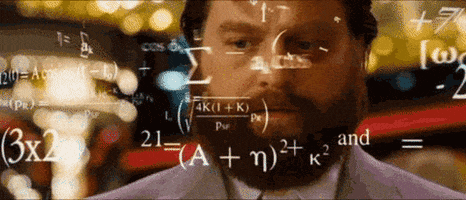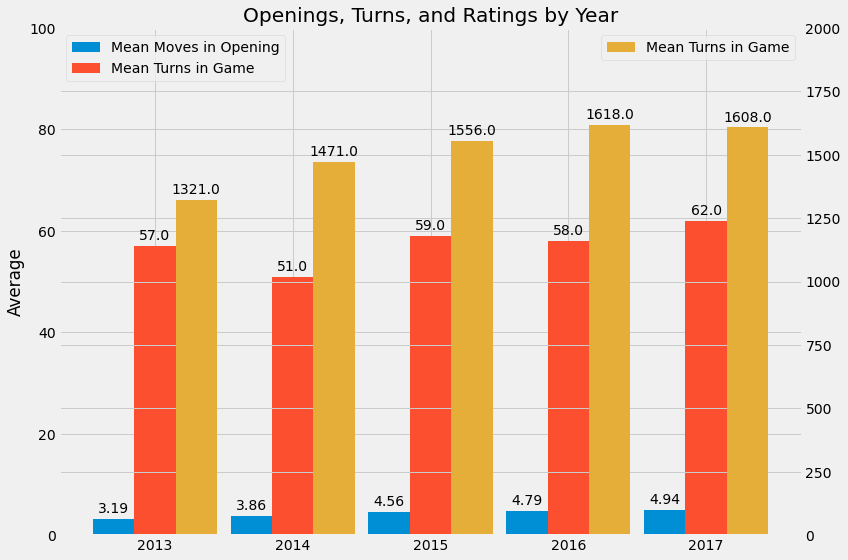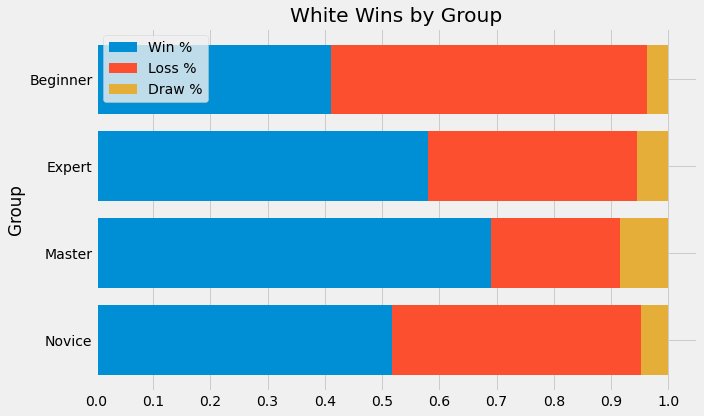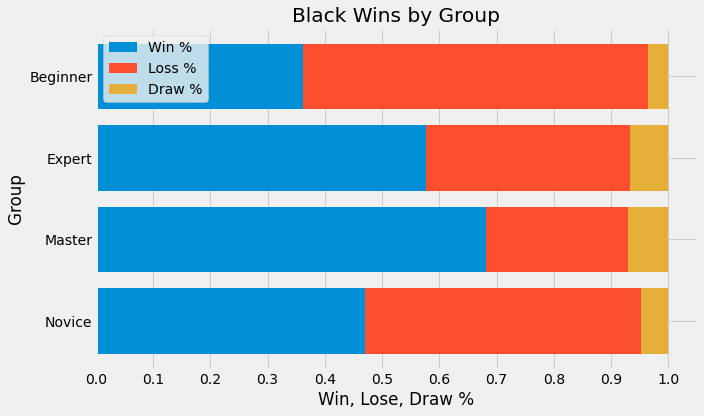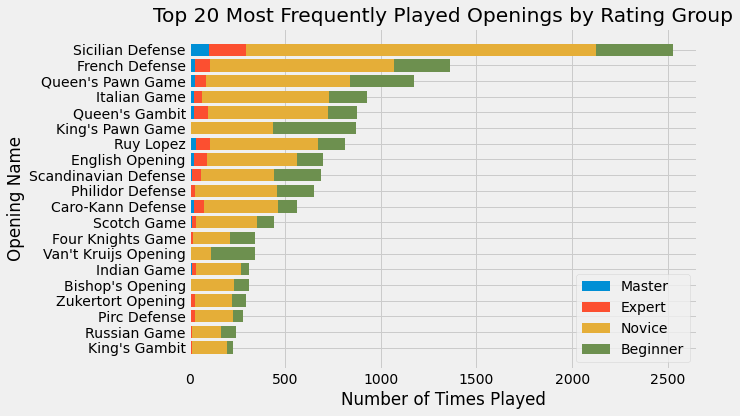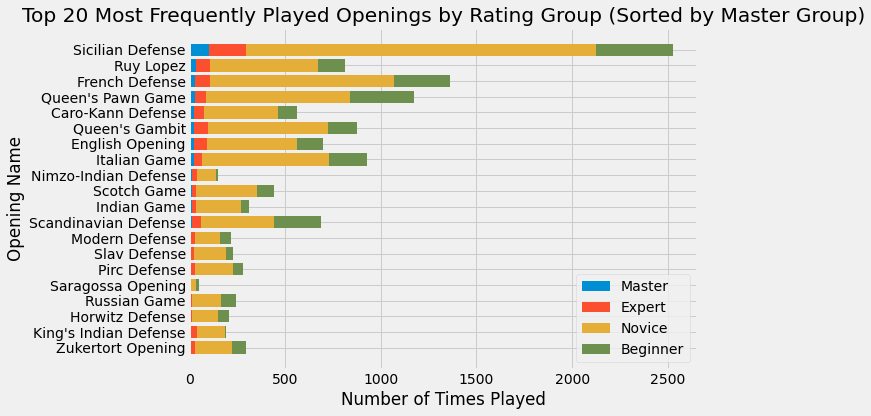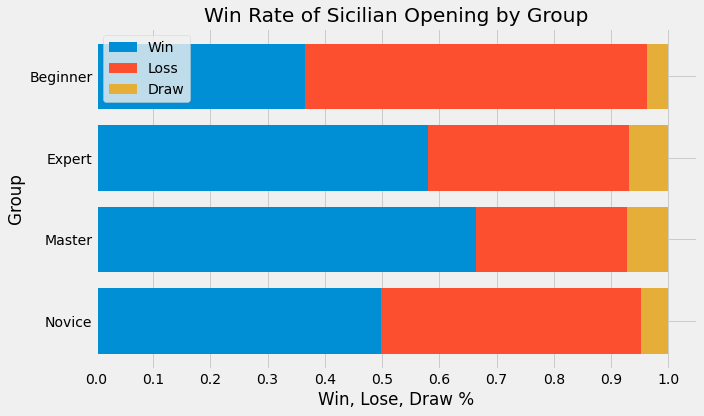- Overview
- Data Set
- Questions
- Analysis
- Conclusion
Chess is a two-player strategy board game played on a checkered board with 64 squares in an 8x8 square grid. The game is believed to have originated in India in the 6th century. Since then, chess has evolved into both a sport and a casual game that is enjoyed by millions of people worldwide!
To play chess, each player begins with 16 pieces: one king, one queen, two rooks, two knights, two bishops, and eight pawns. Each piece moves differently, with the most powerful being the queen and the least powerful the pawn. Play involves no hidden information. The objective is to checkmate the opponent's king by placing it under an inescapable threat of capture.
Chess strategy consists of setting and achieving long-term positioning advantages during the game, while chess tactics concentrate on immediate maneuvering. A game of chess is normally divided into three phases: the opening, typically the first 10 moves, the middlegame, and the endgame.
The analysis is based on the Chess Game Dataset (Lichess), which includes data from nearly 20,000 games from a selection of users on Lichess.org. General information about the dataset can be found below:
Game ID: object
Rated (T/F): bool
Start Time: float64
End Time: float64
Number of Turns: int64
Game Status: object
Winner: object
Time Increment: object
White Player ID: object
White Player Rating: int64
Black Player ID: object
Black Player Rating: int64
All Moves in Standard Chess Notation: object
Opening Eco (Code for any given opening): object
Opening Name: object
Opening Ply (Number of moves in opening phase): int64
Most of the columns in the dataset are categorical. I loaded the file (csv format) into a pandas dataframe and performed the following cleaning procedures. A link to a jupyter notebook containing my python code can be found HERE.
Game IDs: dropped duplicate values
All Moves in Standard Chess Notation: transformed values from a string into a list
Player Rating: created a simplified ranking scale for both White and Black players
Opening Name: created a simplified opening name structure by dropping opening name variations
Winner: created numerical columns to categorize outcome by white, black, or draw
Start Time: created new date column in datetime format
As an avid chess player, my goals were to perform EDA, calculate the probability of success after each move, and recommend moves based on the outcomes of similar games.
I quickly realized that I needed to simplify my goals and focused my analysis on answering more basic questions, such as: which opening is most common and is the probability of winning affected by player ranking and piece color.
The dataset included datetime information, which was useful to interpret changes in the game over time. The graph below illustrates how the number of moves per opening has increased from 2013 to 2017. The graph also shows an increase in average turns per game and player rating over the same time period.
The next chart shows the distribution of player ratings by piece color (white and black). Overall, the distribution of players between these two groups was fairly even.
white rating mean: 1597
black rating mean: 1590
The graph below provides an alternate visualization; however, this time the distribution is grouped by ranking category. You will notice that there are far more beginners and novices than experts and masters.
Next, I wanted to better understand win ratios. According to the dataset, white wins more often than black:
white win: 50%
black win: 45%
draws: 5%
Grouping the dataframe by ranking category and piece color provided a better breakdown of wins and losses and whether the overall win ratio was skewed by a select group of players or category of players. The charts below highlight the first mover advantage, since white pieces move first. Each category won as white more often than as black. The difference in win ratios as Beginners, Novices, Experts, and Masters were 4.9%, 4.8%, 0.3%, and 1.0%, respectively.
To test the first mover advantage I performed a two sample approximate test of population proportions (e.g. the kickflip test). The two populations I tested were Beginners playing as White and Beginners playing as Black.
White Beginner Wins / Frequency of Win: 1943 / 0.41
Black Beginner Wins / Frequency of Wins: 1768 / 0.36
Difference in Sample Proportions: 0.05
p-value: 0.00000041
Conclusion: If you are a beginner and want to win more often then you should play with white pieces.
Openings are a very important part of chess strategy. A chess opening is the group of initial moves of the game. These recognized sequences are given names such as the Ruy Lopez or Sicilian Defense. The fundamental strategy of an opening is to develop pieces, control the center, move the king to safety, and maintain pawn structure. The dataset included 1,477 unique openings! To simplify, I consolidated each variation into its parent, or main opening.
The Sicilian Defense is the most commonly used opening in the dataset. To gain a better understanding of top openings, I sorted the grouping by most frequently played by the Master category. The graph below highlights the top 20 most frequently used openings by chess masters.
The Sicilian Defense is a strategy by black that creates an unbalanced game with many attacking scenarios. The graph below illustrates the winning percentage of this opening by ranking group.
As you can see, the Sicilian is an excellent opening if you are playing as black and are a master. If you're a beginner, you might want to try another strategy.
Like playing chess, analyzing chess datasets can be complicated. The Kaggle dataset is a great resource for those seeking to detect patterns in user behavior. I found the dataset to be very interesting and would like to pursue further analysis on:
- Understanding player behavior / psychology regarding victory status (when to resign / continue)
- Predicting winning patterns / moves in real-time
- Visualizing the chess board with heat maps
- Detecting win probabilities after opening sequences
